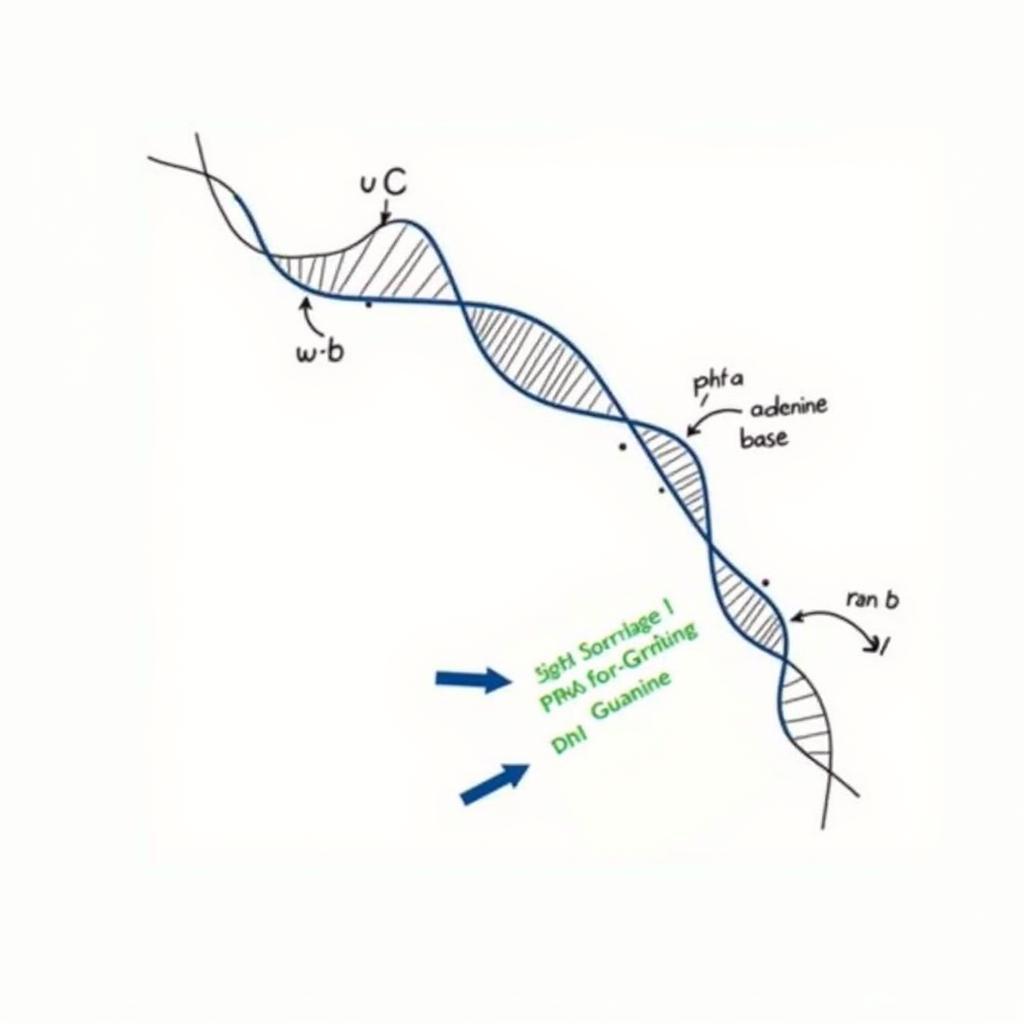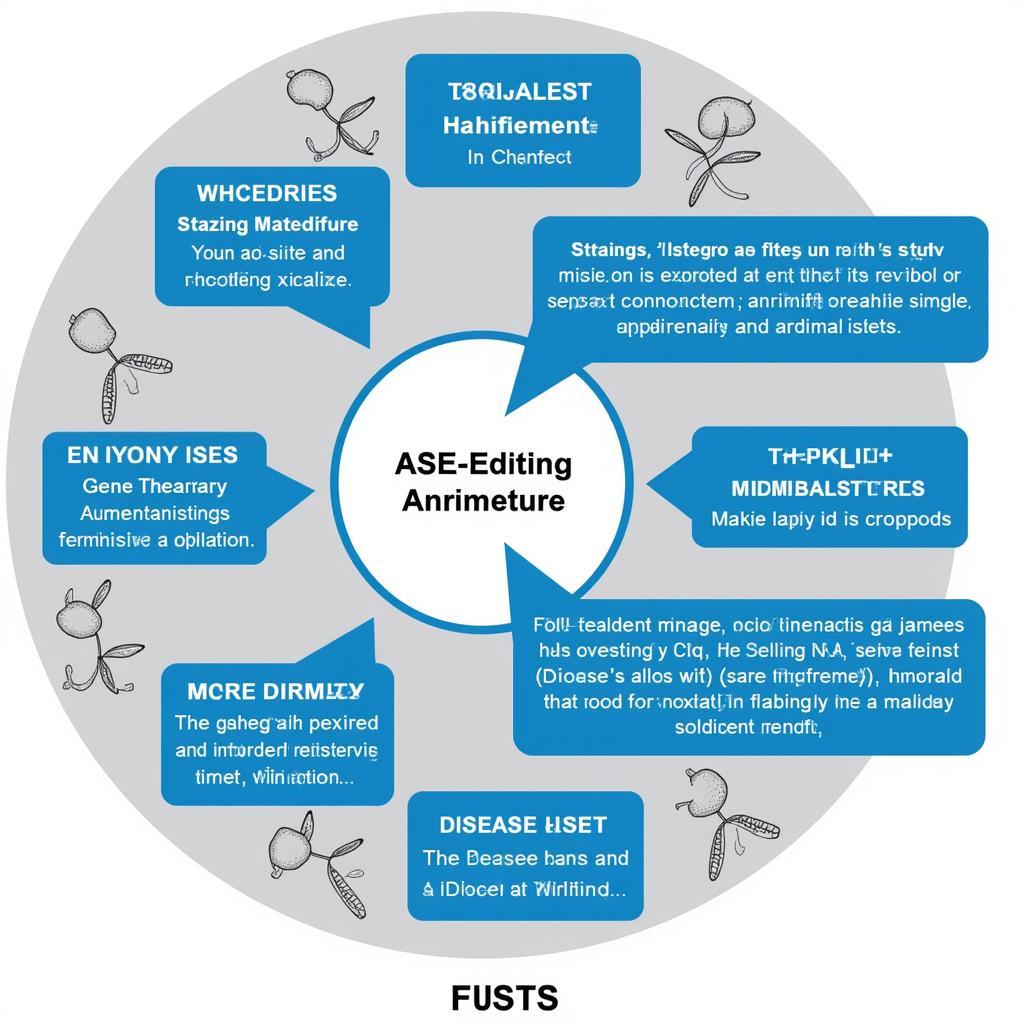Ase Editing With A Cpf1 Cytidine Deaminase Fusion represents a significant advancement in targeted genome engineering. This technique offers researchers a powerful tool for precise gene modification, opening new avenues for understanding gene function and developing novel therapeutic strategies. This article delves into the intricacies of ASE editing using cpf1 cytidine deaminase fusion, exploring its mechanisms, advantages, and potential applications.
Understanding ASE Editing and cpf1 Cytidine Deaminase Fusion
ASE editing, also known as adenine base editing, is a type of genome editing technology that enables the precise conversion of adenine (A) to guanine (G) in DNA without introducing a double-stranded break. This conversion can correct certain disease-causing mutations or introduce specific changes to study gene function. The cpf1 cytidine deaminase fusion is a crucial component of this system. Cpf1, also known as Cas12a, is a CRISPR-associated protein that acts as a molecular scissor, targeting specific DNA sequences. When fused with a cytidine deaminase, this complex can directly edit the target adenine base. This combination allows for efficient and specific A-to-G conversions in the genome.
 Mechanism of cpf1 Cytidine Deaminase Fusion in ASE Editing
Mechanism of cpf1 Cytidine Deaminase Fusion in ASE Editing
Advantages of ASE Editing with cpf1 Cytidine Deaminase Fusion
ASE editing with cpf1 offers several advantages over traditional gene editing methods. Firstly, its high specificity minimizes off-target effects, reducing the risk of unintended genomic alterations. Secondly, it avoids the need for a double-stranded DNA break, which can lead to unwanted insertions or deletions. This targeted approach makes it a valuable tool for correcting single-point mutations responsible for various genetic diseases. Furthermore, the cpf1 system’s ability to target T-rich regions expands the scope of editable genomic loci.
Applications of ASE Editing with cpf1 Cytidine Deaminase Fusion
The potential applications of ASE editing with cpf1 cytidine deaminase fusion are vast. In disease modeling, it allows researchers to introduce specific mutations in cells or organisms to study their effects and develop targeted therapies. In gene therapy, it holds promise for correcting genetic defects responsible for inherited disorders. Additionally, it has applications in drug discovery and development, agriculture, and biotechnology. This versatile tool is contributing to advancements in various fields, paving the way for personalized medicine and improved disease management.
Addressing Common Questions about ASE Editing with cpf1
What are the limitations of ASE editing? While promising, ASE editing still faces challenges such as potential off-target effects and the limited editing window. Ongoing research aims to improve its efficiency and accuracy.
How does ASE editing compare to other base editing techniques? Compared to cytosine base editors (CBEs), ASE editing offers the unique ability to convert A to G, expanding the range of targetable mutations.
 Applications of ASE Editing with a cpf1 Cytidine Deaminase Fusion
Applications of ASE Editing with a cpf1 Cytidine Deaminase Fusion
Conclusion
ASE editing with a cpf1 cytidine deaminase fusion is a groundbreaking technology that offers precise and efficient genome modification. Its unique advantages, including high specificity and the ability to target T-rich regions, make it a valuable tool for various applications, from disease modeling to gene therapy. As research progresses, ASE editing with cpf1 holds immense potential for advancing our understanding of genetics and developing innovative therapeutic strategies.
FAQ
- What is ASE editing? ASE editing allows precise A-to-G base conversions in DNA.
- How does cpf1 contribute to ASE editing? Cpf1 acts as a molecular scissor, targeting specific DNA sequences.
- What are the advantages of using cpf1? Cpf1 offers high specificity and targets T-rich regions.
- What are the applications of ASE editing? Gene therapy, disease modeling, drug discovery, and agriculture.
- What are the limitations of ASE editing? Potential off-target effects and a limited editing window.
- How does ASE editing compare to CBE? ASE edits A to G, while CBE edits C to T.
- What is the future of ASE editing? Continued research to improve efficiency and expand applications.
For further support, please contact us at Phone: 0369020373, Email: aseanmediadirectory@gmail.com, or visit us at: Thôn Ngọc Liễn, Hiệp Hòa, Bắc Giang, Việt Nam. We have a 24/7 customer service team.
